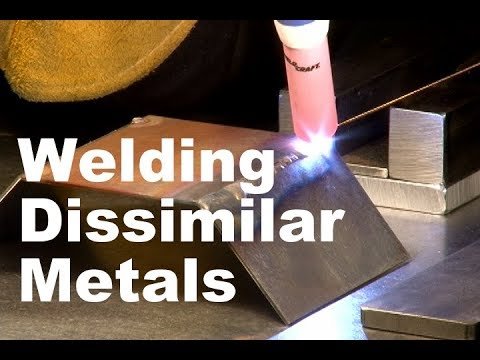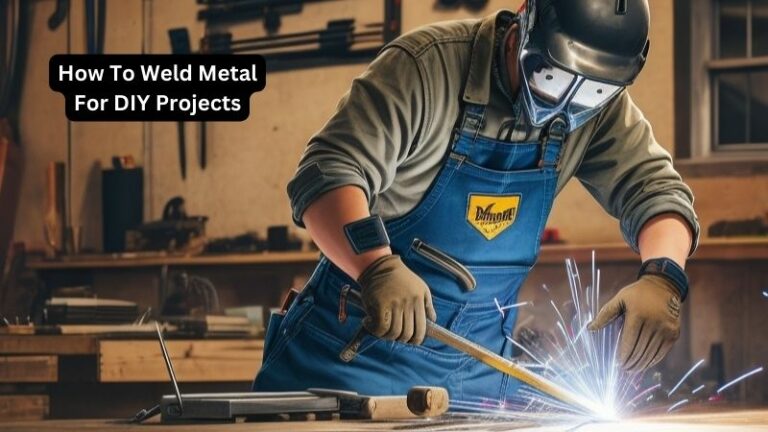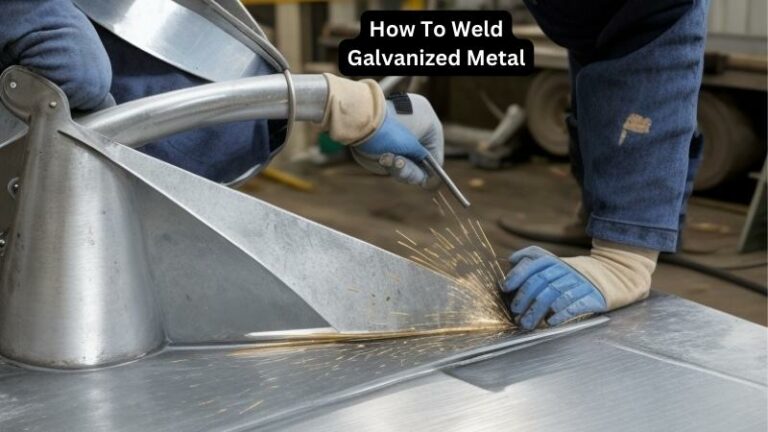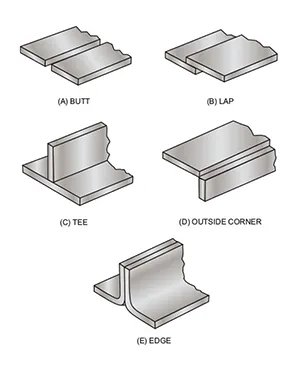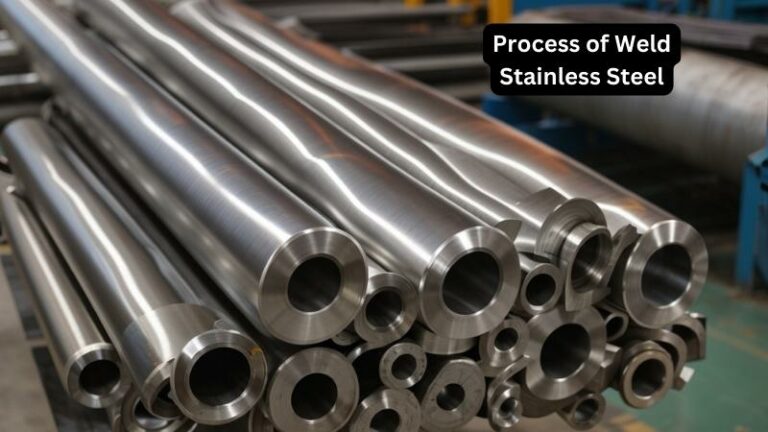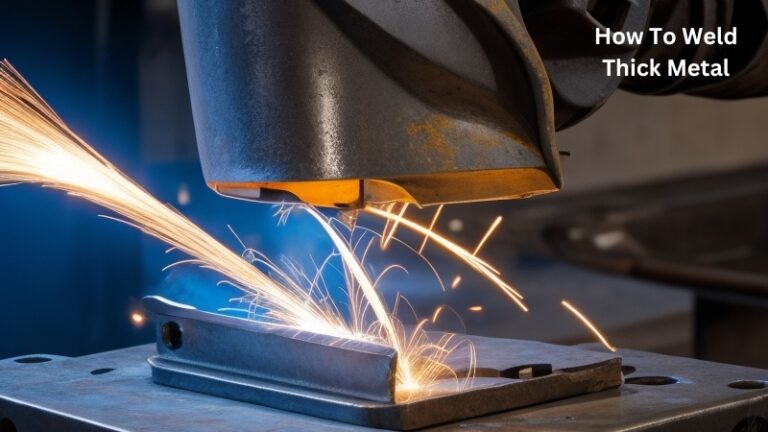How to Weld Different Metals: A Step-By-Step Guide
Looking to seamlessly join different metals together? Wondering how to weld different metals effectively? Look no further! In this article, we’ll guide you through the intricacies of welding various metals, providing you with the knowledge and techniques necessary to accomplish successful welds. Whether you’re a novice or a seasoned welder, understanding the proper methods for welding different metals is essential. So, let’s dive in and explore the fascinating world of metal welding!
How to Weld Different Metals
Welding is a crucial skill in various industries, from construction to manufacturing. When it comes to welding, understanding the specific techniques and considerations for different metals is essential. Each metal has unique properties and characteristics that require specific approaches to achieve a strong and reliable weld. In this article, we will explore the different methods and best practices for welding various types of metals.
1. Steel Welding
Steel is one of the most commonly welded metals due to its versatility and widespread use. Here are the key techniques for welding steel:
MIG Welding:
MIG (Metal Inert Gas) welding is a popular method for steel welding. It involves using a consumable wire electrode that melts and fuses the base metals together with the help of an inert gas shield. MIG welding provides high welding speed and good control over the process.
TIG Welding:
TIG (Tungsten Inert Gas) welding is another widely used technique for steel. It utilizes a non-consumable tungsten electrode to create an arc that melts the metals. TIG welding produces precise and high-quality welds, making it suitable for thin steel sheets and critical applications.
Arc Welding:
Arc welding, also known as stick welding, is a traditional and reliable method for welding steel. It employs a covered electrode that melts and forms the weld joint. Arc welding is versatile and can be used in various positions, making it suitable for heavy structural welding.
2. Aluminum Welding
Aluminum is a lightweight metal with high thermal conductivity, presenting unique challenges for welding. Here are the primary techniques used for aluminum welding:
TIG Welding:
TIG welding is the most common method for welding aluminum. The non-consumable tungsten electrode, along with a filler rod, creates a precise and controlled weld. The use of argon gas as a shielding agent helps prevent oxidation during the welding process.
MIG Welding:
MIG welding can also be used for aluminum, but it requires specialized equipment and techniques. Aluminum wire, a spool gun, and a shielding gas system are necessary components for successful MIG welding of aluminum. This method provides high deposition rates and is suitable for thicker aluminum materials.
3. Stainless Steel Welding
Stainless steel is known for its exceptional corrosion resistance and aesthetic appeal, making it widely used in various industries. Here are the main welding techniques for stainless steel:
TIG Welding:
TIG welding is the preferred method for stainless steel due to its ability to produce precise and clean welds. The use of a filler rod and argon gas shield ensures a strong and corrosion-resistant weld joint. TIG welding is suitable for both thin and thick stainless steel materials.
MIG Welding:
MIG welding can also be used for stainless steel, especially for thicker sections. The process involves using a consumable wire electrode and a shielding gas mixture, typically argon with a small percentage of helium. MIG welding provides high productivity and is suitable for stainless steel fabrication.
4. Copper Welding
Copper is widely used in electrical and plumbing applications. However, it requires specific welding techniques to ensure a successful weld. Here are the primary methods for copper welding:
TIG Welding:
TIG welding is commonly used for copper welding due to its precision and control. It involves using a non-consumable tungsten electrode, along with filler rod if needed. The use of argon gas as a shielding agent prevents oxidation and produces high-quality copper welds.
Brazing:
Brazing is an alternative method for joining copper components. It involves heating the base metals and using a filler material (usually a copper alloy) with a lower melting point to create a strong bond. Brazing is suitable for joining copper pipes and other copper components with minimal distortion.
5. Cast Iron Welding
Cast iron is a challenging material to weld due to its high carbon content and brittleness. However, with the right techniques, successful welds can be achieved. Here are the primary methods for welding cast iron:
Preheating and Post Heating:
Preheating the cast iron before welding helps reduce the risk of cracking. Post heating is also essential to relieve stress and prevent cracking after welding. Both techniques involve gradually heating the cast iron to specific temperatures and allowing it to cool slowly.
Stick Welding with Nickel Electrodes:
Stick welding with special nickel-based electrodes designed for cast iron welding is a common method. The high nickel content in the electrode helps create a ductile weld, which reduces the risk of cracking. Proper preheating and post heating are crucial when using this method.
6. Titanium Welding
Titanium is a lightweight and corrosion-resistant metal often used in aerospace and medical applications. However, it requires specialized techniques for successful welding. Here are the primary methods for titanium welding:
TIG Welding:
TIG welding is the most common method for titanium due to its ability to produce high-quality welds. The use of argon gas as a shielding agent is crucial to prevent contamination and ensure a clean weld joint. Proper cleanliness and tight control over the welding environment are essential for titanium welding.
Laser Beam Welding:
Laser beam welding is an advanced technique used for titanium welding. It employs a focused laser beam to melt and fuse the titanium parts together. Laser welding provides precise control and produces welds with minimal distortion and heat-affected zones.
In conclusion, welding different metals requires specific techniques and considerations to achieve strong and reliable welds. Whether you are working with steel, aluminum, stainless steel, copper, cast iron, or titanium, understanding the appropriate welding methods is crucial. By following the recommended practices for each metal type, you can ensure successful welds that meet the required standards and specifications. Remember to always prioritize safety and seek professional guidance if needed for complex welding projects.
Frequently Asked Questions (FAQs)
Here are some frequently asked questions related to welding different metals:
Q: Can I weld different metals together?
A: In general, it is not recommended to weld different metals together due to their differing properties and behaviors during the welding process. However, there are some specialized techniques, such as explosive welding or using filler metals, that can be employed for specific applications.
Q: How do I choose the appropriate welding method for a specific metal?
A: The choice of welding method depends on factors such as the type of metal, its thickness, the required strength of the weld, and the application. Consulting with welding professionals or referring to welding handbooks and guidelines can help you determine the most suitable welding method for your specific needs.
Q: Can I weld dissimilar metals using fusion welding?
A: Fusion welding, such as TIG or MIG welding, is generally not recommended for dissimilar metals due to differences in melting points and thermal expansion coefficients. However, other joining methods like brazing or mechanical fastening may be more suitable for dissimilar metal combinations.
Remember, practice, proper training, and adherence to safety precautions are vital for successful welding. Always follow the recommended welding procedures outlined by the material manufacturer and seek assistance from experienced professionals when needed. Happy welding!
How to Weld Different Metals: MIG vs TIG vs Stick vs Flux Core
Frequently Asked Questions
What are the different types of metals that can be welded together?
Various types of metals can be welded together, including steel, stainless steel, aluminum, copper, brass, and titanium. Each metal has different welding characteristics and may require specific techniques and equipment for successful welding.
What factors should be considered when welding different metals?
When welding different metals, several factors need to be considered. These include the type of metals being welded, their thicknesses, the welding process being used, the required strength of the weld, and any specific welding codes or standards that need to be followed.
What are some common welding processes for joining different metals?
Common welding processes used for joining different metals include MIG (Metal Inert Gas) welding, TIG (Tungsten Inert Gas) welding, stick welding (also known as Shielded Metal Arc Welding), and flux-cored arc welding. The choice of welding process depends on factors such as the type and thickness of metals, the intended application, and the skill level of the welder.
Are there any special considerations when welding dissimilar metals?
Yes, welding dissimilar metals requires special considerations. Some metals have significantly different melting points, thermal expansion rates, and chemical compositions, which can affect the welding process. Preheating, using the appropriate filler material, and controlling the heat input are important when welding dissimilar metals to avoid cracking or other defects.
What safety precautions should be taken when welding different metals?
When welding different metals, it is crucial to follow proper safety precautions. This includes wearing appropriate personal protective equipment (PPE) such as welding helmets, gloves, and protective clothing. Adequate ventilation, fire prevention measures, and awareness of any hazardous materials being used are also essential for a safe welding environment.
Are there any limitations or challenges when welding different metals?
Welding different metals can present challenges due to their varying properties. Some metals may require specialized techniques or filler materials. It is important to understand the characteristics of each metal and test welds to ensure the desired strength and integrity of the joint. Additionally, certain combinations of metals may not be easily weldable or may require additional steps such as surface preparation or post-weld heat treatment.
Final Thoughts
In conclusion, knowing how to weld different metals is crucial for a successful welding project. By understanding the characteristics and properties of the metals involved, welders can make informed decisions about suitable welding techniques and consumables. Whether it is steel, aluminum, or stainless steel, each metal requires specific considerations such as preheating, electrode selection, and shielding gas. Through proper preparation, consistent technique, and appropriate safety measures, welders can achieve strong and durable welds that meet the desired specifications. So, to ensure the best results, mastering the art of welding different metals is essential for any welding enthusiast or professional.
